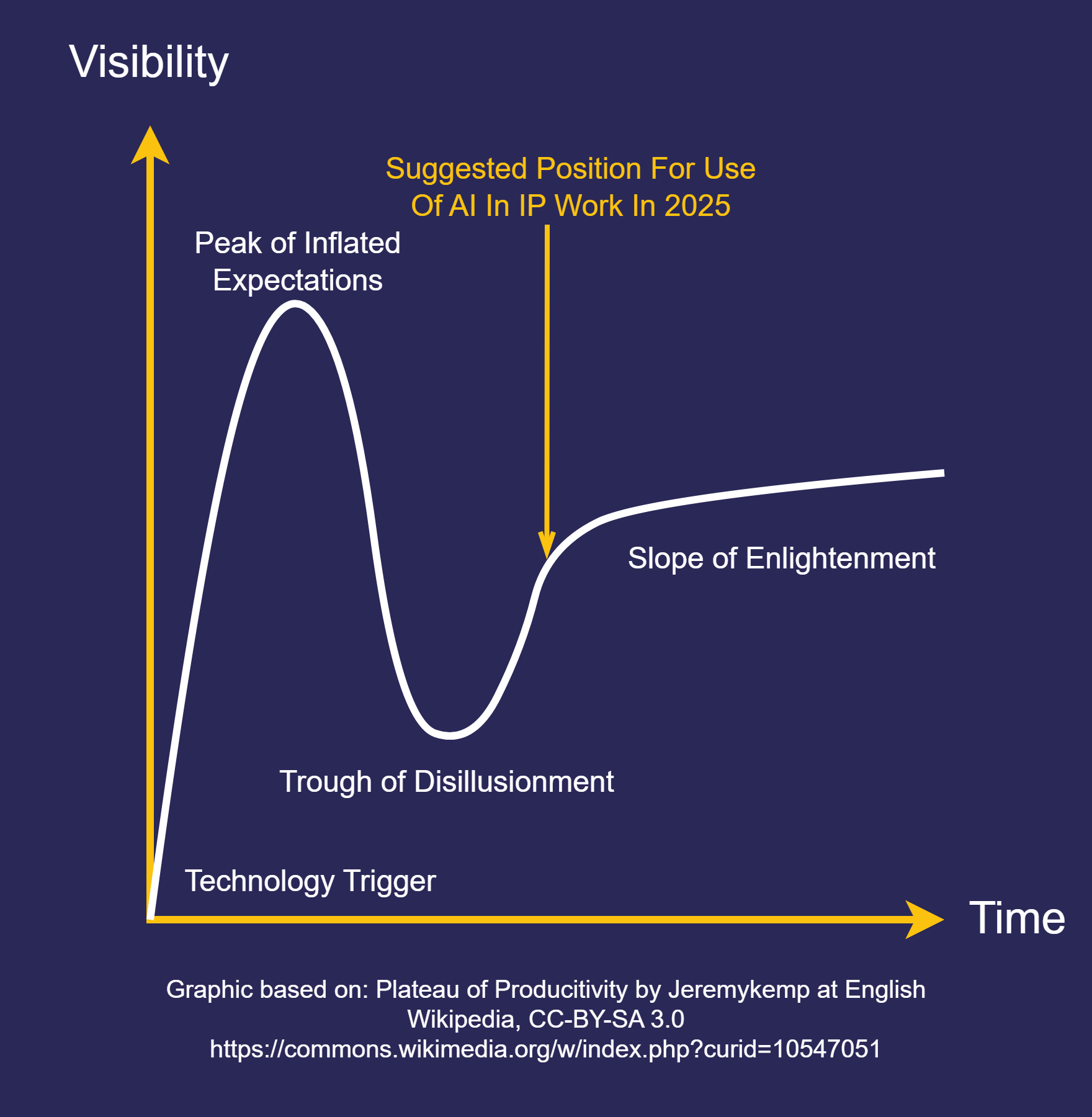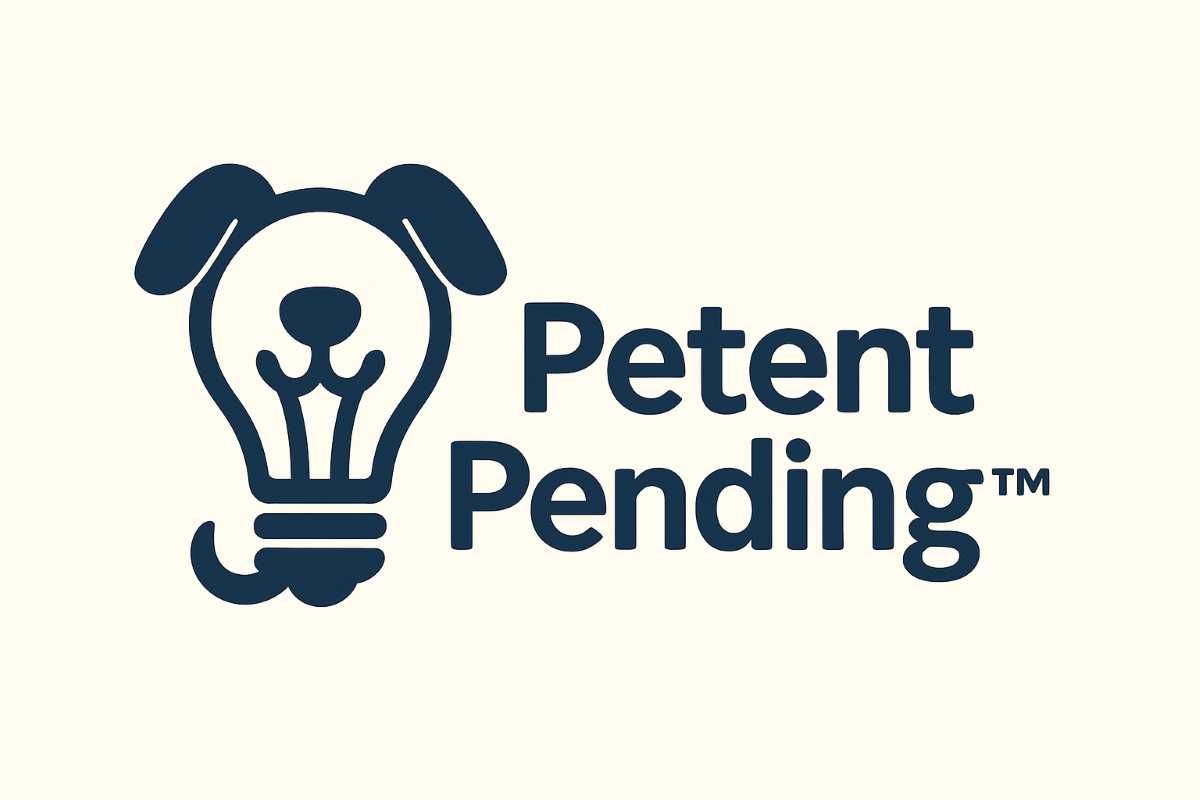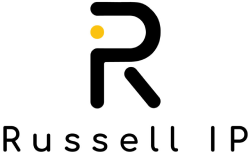IP Tool Demo Day: Exploring Nine IP Tools
Table of Contents
Introduction
Setting the Scene
I’m Iain Russell, a UK and European patent attorney and the founder of Russell IP. I specialise in protecting computer technologies, especially those involving artificial intelligence (AI).
Having set up and run several businesses – and being an inventor myself – I’ve long been interested in how AI can be used to innovate across different fields.
Recently, I organised an IP Tool Demo Day to test nine different patent tools, offering solutions for patent drafting, AI-assisted document analysis, IP management, valuations, annuities, and more. Over the past year, I had been offered numerous demos of various AI-driven tools but was cautious about exploring them too soon. My prior experiences with some generative AI platforms left me feeling underwhelmed, primarily because their features weren’t mature enough for rigorous patent work.
Dedicating a full day to these demos allowed me to focus entirely on evaluating each product, helping me form a comprehensive view of the current landscape. In this article, I share insights from that day and discuss how IP tools, particularly those using generative AI, might be leveraged in the patent profession.
Embracing AI in IP
To illustrate the potential efficiency gains, I (intentionally) used an AI large language model (LLM) to write much of this blog post, based on my guidance and input.
This approach isn’t a shortcut; rather, it demonstrates how AI can streamline the process of organising information, summarising complex topics, and structuring written content. I then refined the output to try to ensure it remained accurate, consistent, and relevant for an audience that already has some familiarity with patents.
Important Note
- IP Tool Evolution: This article offers a snapshot in time. Software features and the capabilities of LLMs evolve rapidly, so certain details may change.
- No Endorsement: Nothing here should be taken as an endorsement or criticism of any particular tool. The goal is to share observations that can help people determine whether these IP tools, AI-based or otherwise, fit their specific needs. The order in which specific tools are introduced below corresponds to the order in which the demos took place on IP Tool Demo Day.
- Provider Information: Any quotes or information from tool providers are as presented during the demos and haven’t been independently verified.
Why IP Tools Matter for Patent Professionals
- Enhancing Productivity: Dedicated IP tools may automate some time-consuming tasks such as docketing, cost estimation, and invention capture. This may free up resources for higher-value activities, like strategy and complex legal analyses.
- Improving Accuracy: Automation might reduce human error in certain aspects of patent work. However, its utility heavily depends on the specific task. For instance, patent claim drafting or freedom-to-operate (FTO) analyses often demand rigorous human oversight due to the risk of AI “hallucinations”.
- Staying Competitive: As AI and machine learning (ML) advance, using these tools can streamline turnaround times, manage costs, and differentiate services – an increasingly important factor in a tech-driven market.
- AI Beyond Patent Drafting: While many AI tools focus on patent drafting, there’s value in exploring other functionalities:
- Prior Art Searching: Quickly sifting through large datasets to identify relevant documents.
- IP Valuation: Leveraging data to estimate a patent portfolio’s value, factoring in citations or evidence of use.
- Data Visualisation: Presenting competitor trends or portfolio gaps in user-friendly, visual formats.
Overview of the IP Tool Demo Day
Event Setup & Selection Criteria
- Curated List: I posted an open invitation on LinkedIn, offering any IP tool provider a chance to demonstrate their platform. Of about 15 responses, nine demos were scheduled. These tools spanned multiple functionalities, from AI-assisted patent drafting to deep data analytics and annuities management.
- Demo Format: Each demo lasted about 25 minutes over videoconference. Providers were free to showcase whichever features they felt were most compelling. Despite the tight time window, I was impressed with the breadth of capabilities each presenter managed to highlight and their ability to keep to only 25 minutes for each demo.
Methods & Limitations
- Initial Impressions: My insights stem from these brief demos and accompanying provider information. No extensive checks were performed, and any claims made by the providers remain unverified.
- No Full Technical Audit: Issues like security or compliance checks weren’t part of my demo-day focus. Anyone considering a tool should perform their own due diligence regarding data security and confidentiality.
The Nine IP Tools in Detail
Below are summaries of the nine IP Tools. These insights might help anyone familiar with patent drafting and prosecution decide if a tool might fit into their existing workflows. While each tool promises various degrees of automation or AI capabilities, keep in mind that careful oversight (most likely from an IP attorney) is essential to ensure accuracy and to manage legal risks.
RightHub AI
IP Tool Name: RightHub AI
Website: https://righthub.com/ai
Summary:
RightHub AI is designed to integrate within the RightHub IP management system (IPMS). It includes an AI agent for document analysis (e.g. prior art documents, office actions, and claims), alongside functionalities for generating invention disclosures, prior art searches, and automatic translations.
Features that stood out to me:
- AI agent can review multiple documents and answer questions.
- Automatic OCR for PDFs that have not been converted to text.
- Hashtags to reference specific documents among many uploads.
- Links to relevant document parts for direct access.
- Invention functionality to create invention disclosure forms and conduct prior art searches.
- Docketing functionality to generate bibliographic data and populate records automatically.
- Translation features built into the IPMS.
Solve Intelligence
IP Tool Name: Solve Intelligence
Website: https://www.solveintelligence.com
Summary:
Solve Intelligence is a patent drafting platform that includes a structured workflow for generating patent specifications. It can refine invention disclosures by prompting users for additional details, it can incorporate prior art, and it can manage various drafting steps with user-defined levels of control.
Features that stood out to me:
- Invention disclosure integration: the system can prompt for clarifications and additional information after reviewing an invention disclosure.
- Search capabilities: generates a search brief from disclosures and retrieves semantically relevant references.
- Customisable drafting process: supports full patent specification creation with user-defined constraints.
- Figure handling: upload existing figures and/or automatic figure generation (including diagrams).
- Drafting structure: creates a plan for the specification, allowing user review before final content generation.
- Project-based context management: maintains siloed workspaces with distinct contexts.
- Tailored drafting rules: create templates from sample applications to align with a specific drafting style.
- Invention capture workflow: prompts inventors for disclosure submissions and collects data for subsequent patent drafting.
iPify
IP Tool Name: iPify
Website: https://www.ipify.app
Summary:
iPify has a platform supporting its solutions-focused on patent validations and annuities. It integrates workflows for generating quotes, managing invoices, and tracking renewals in various jurisdictions. iPify indicates that it exclusively works with IP professionals and indicates that it does not pursue the end clients of its customers.
Features that stood out to me:
- Centralised quoting system for validations and annuities, with fixed-cost invoicing.
- Partnerships with local attorneys to provide translations, and fees that benefit from those partnerships.
- Real-time status tracking for validations and renewals.
- Functionality for easily sharing quotes with clients.
- Comparative tool to evaluate long-term costs of national validations versus unitary patents, including configurable renewals parameters.
Qatent
IP Tool Name: Qatent
Website: https://qatent.com
Summary:
Qatent is a patent drafting platform that offers a range of functionalities for creating and refining patent specifications. It includes features for identifying technical effects, managing claims (including claims generation), and integrating classification data into the drafting process. Qatent informed me of several additional upcoming features:
- Customisation of drafts.
- Proofreading
Features that stood out to me:
- Comprehensive library of technical effects, enabling automated suggestions for relevant features.
- IPC prediction and manipulation to guide terminology use during drafting.
- Ability to generate figures directly within the platform.
- Planned GPU location control for users needing specific regional compliance.
- Generation in English, German, French and Chinese (not using English as a pivot).
- Machine vision to describe figures.
- Reference numeral management.
Patently
IP Tool Name: Patently
Website: https://patently.com
Summary:
Patently is a platform that provides vector-based prior art searching and patent drafting functionalities. It takes an existing set of claims, from which it identifies features, assigns reference numerals, and can generate annotated diagrams.
Features that stood out to me:
- Claim-based drafting with annotated “parts” recognised in each independent and dependent claim.
- Vector-based prior art search, showing relevance scores and providing adjustable filters.
- Automatic generation of message-flow diagrams and flowcharts from claims.
- Reference numeral management, including renumbering and annotation on uploaded images.
- Includes a full invention disclosure input for more comprehensive drafting.
Questel
IP Tool Name: Questel
Website: https://www.questel.com
Summary:
Questel is a platform offering extensive patent data analytics, search capabilities, and visualisation tools. It is designed for users who need flexible ways to handle and examine large sets of patent information while facilitating collaboration between teams.
Features that stood out to me:
- Reference sign cross-referencing in prior art drawings.
- Built-in patent search with optional non-patent literature results based on identified patents.
- Competitor monitoring and alert features.
- Visualisation tools such as white space reports, heat maps, and data-driven rankings.
- Flexible analysis of large patent portfolios, enabling comparisons and trend reviews.
- Patent categorization features to help identify the most relevant patents within a dataset.
- AI-powered assistant to accelerate query building.
Deep IP
IP Tool Name: DeepIP
Website: https://www.deepip.ai
Summary:
DeepIP is deployed as an add-on for Microsoft Word that supports patent drafting and office action responses. It allows users to work directly in Word, providing a customisable approach for each section of a patent application.
Features that stood out to me:
- Integration within Microsoft Word, compatible with Mac.
- Ability to include an invention disclosure, prior art, and sample patent applications as context.
- Section-by-section drafting controls for titles, background, and other parts of the specification.
- Custom prompts for tasks such as translation or automatically adding reference numerals.
- Option to upload example drafts, enabling tailored style rules for different drafting preferences.
Patentiv
IP Tool Name: Patentiv
Website: https://www.patentiv.com
Summary:
Patentiv is an AI-powered patent valuation platform that incorporates more than 80 factors for qualitative, quantitative, business strategy assessments, risk analysis and financial projections to generate “patent score, royalty rate and net present value” of the patents. It also produces PDF reports suitable for formal documentation or patent box purposes.
Features that stood out to me:
- Incorporation of practical valuation factors beyond standard bibliographic data.
- Professional, user-friendly interface for entering relevant information.
- Immediate, comprehensive PDF reports that can be shared with stakeholders.
- Potential synergies with patent brokers or valuation consultants.
Rowan Patents
IP Tool Name: Rowan Patents
Website: https://clarivate.com/intellectual-property/ip-management-software/rowan-patents
Summary:
Rowan Patents is a set of patent drafting tools emphasising automation and synchronisation of key elements of a patent specification. It integrates generative AI features but maintains a user-led approach to generating patent specifications.
Features that stood out to me:
- Automatic propagation of changes across claims, figures, and other references.
- Synchronisation of claim terminology and reference numerals throughout the specification.
- Focus on clear, consistent language with optional AI enhancements.
- Cross-platform application, available on both Mac and Windows.
Key Considerations When Choosing an IP Tool
- Different Needs, Different Tools
- Each user, firm, and client has unique priorities. Some may focus on patent drafting with AI, while others require data analytics, annuities management, or valuation tools.
- Hands-On Testing
- Demos or trial periods can show how well a tool aligns with existing workflows – particularly important for patent drafting, prior art analysis, or IP portfolio management.
- Trying more than one tool for the same function can be enlightening, as unexpected features might meet specific needs better than others.
- Confidentiality & Transparency
- Always verify how a platform handles sensitive data. Issues like data security, privacy, and accuracy are critical when considering any tool that processes confidential or proprietary information.
- Ensure you have proper consent and that stakeholders understand the role of AI in your processes.
- Potential Beyond Drafting
- AI-based patent drafting solutions are popular, but there are many other applications:
- Portfolio Management: Automated deadline tracking and workflow management.
- Competitor Intelligence: Monitoring filings, trends, and potential overlaps.
- Cost Estimates: Generating transparent fee breakdowns.
- Valuation: Using data analysis to assess patent strength and market relevance.
- AI-based patent drafting solutions are popular, but there are many other applications:
- Stay Updated on New Tools
- The IP tools landscape evolves quickly. Providers release updates, add features, or modify interfaces regularly. Keeping an eye on these developments can help you stay ahead.
How Russell IP Is Embracing AI
At Russell IP, we constantly explore how AI tools can enhance the efficiency and accuracy of patent work. While we recognise the nuances of AI in a specialised field, we see tremendous potential for innovation in IP management and patent drafting.
- Thought Leadership: We’ve shared our AI-related insights and experiences on LinkedIn, aiming to foster a balanced discussion on AI’s capabilities and limitations in the patent profession.
- Educating Others: Through seminars and webinars, we shed light on using AI for various tasks – searching prior art, managing portfolios, or drafting – while highlighting ethical and security considerations.
- Professional Influence: My involvement in CIPA’s AI Committee (previous known as the AI Task Force) ensures we remain at the cutting edge of discussions around the future of AI in IP, helping set best practices as the technology matures.
- Selective Use, Real Impact: Russell IP employs AI where it can genuinely improve outcomes. Each AI integration is carefully planned, monitored, and refined, with transparency and extensive discussion with clients about how it affects the patent process.
For those less familiar with the patent landscape, working with an experienced team can be especially helpful when exploring or leveraging AI tools. If you’d like to learn more about our approach or see how these technologies might fit your needs, feel free to get in touch.
Predictions for Increased AI Capability & Adoption
- Initial Hype: Early AI adopters once treated it as “magic”, expecting it to tackle complex tasks flawlessly. Real-world experience has tempered these expectations, clarifying where AI excels and where human expertise is still vital.
- Hype Cycle Position: I believe the IP sector is moving past the ‘Peak of Inflated Expectations’ and the ‘Trough of Disillusionment’, and up the ‘Slope of Enlightenment’. Users are recognising AI’s strengths but also acknowledging the critical role of the patent professional.
- 2025 Adoption Jump: Several factors could drive more widespread AI adoption in 2025:
- Emerging Guidelines: Concrete ethical and procedural guidelines (such as those issued by the Institute of Professional Representatives before the European Patent Office) may help professionals use AI responsibly and confidently.
- Increased Regulation: Regulatory frameworks could enhance trust by demanding greater transparency and accountability in AI-driven processes.
- Beyond the Basics: AI in IP may soon include:
- Advanced Analytics: Identifying overlooked patterns in prior art, competitor portfolios, and market data.
- Real-Time Collaboration: Tools enabling synchronous editing or multi-jurisdictional cooperation.
- Big Data Integration: Drawing on broader datasets (non-patent literature, market indicators) to inform licensing or valuation strategies.
- Increased Accuracy: Evolving AI models will improve in tasks such as prior art searching or claim parsing, reducing potential errors in ways not possible just a few years ago.
- Broader Use Cases: AI might expand beyond drafting to provide workflow automation, strategic IP management, and client-facing dashboards.
- Pressure from Stakeholders: As AI normalises, stakeholders may come to expect these tools in everyday IP processes, pushing more practitioners to adopt AI-driven solutions.
Conclusion
Recap
- Broad Landscape: From automated drafting and annuity management to patent valuation and data analytics, the IP tools market is constantly growing in scope. Each solution brings unique features that can streamline various facets of patent work.
- Know Your Needs: No single tool can solve every challenge. Matching a tool’s features to a firm’s specific workflow or strategic goals is crucial.
Looking Ahead
- Continuous Exploration: The rapid pace of AI tool development means solutions will keep evolving. Staying informed and testing new platforms can help you remain competitive and efficient.
- AI’s Ongoing Role: When used thoughtfully and ethically, AI can transform patent work by boosting efficiency and accuracy. Nevertheless, human oversight is still a cornerstone of quality.
Final Note on LLM Usage
A large portion of this post was generated by an AI LLM, but it was curated by me, ensuring it reflects the needs and context of patent professionals.
Final Call to Action
- Share Your Thoughts: If you’ve tried any of these tools (or others), I’d love to hear your experiences. Your insights could help guide more informed decisions in the IP community.
- Stay Curious: Whether you’re already exploring AI in IP or just beginning, keep asking questions, experimenting with new platforms, and seeing how technology can enhance your practice.
Thank You for Reading!
I hope this overview of my IP Tool Demo Day offers practical insights for those experienced in the patent world – whether you’re looking to refine drafting efficiency, harness powerful analytics, or streamline IP management.
Disclaimer
The content here represents personal observations and AI-generated summaries from short demos; it isn’t legal or business advice. Anyone considering adopting these tools should conduct their own evaluation and due diligence.




